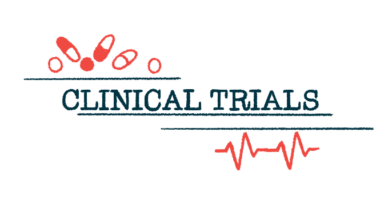Experimental Treatments for Rett Syndrome
AMO-04
AMO-04 is an antidepressant being repurposed to potentially treat Rett syndrome. The active compound in AMO-04, is tianeptine, an antidepressive agent. It is a molecule that modulates the action of the neurotransmitter glutamate, vital to brain development and neuronal function. The potential therapy showed promise in animal models of Rett syndrome, but it has not yet been tested in patients with the disease.
Anavex 2-73
Anavex 2-73 is an investigational small molecule that targets a protein receptor called the sigma-1 receptor. This is a so-called chaperone, in that it guides newly synthesized proteins through a compartment in the cell called the endoplasmic reticulum, ensuring they fold correctly. By binding and activating this receptor, Anavex 2-73 may be able to reduce protein misfolding, potentially easing Rett symptoms. It is currently being tested in a Phase 2/3 trial.
AVXS-201
For Rett syndrome, scientists are researching a gene therapy approach, in which the correct versions of the MECP2 gene can be delivered into the nucleus of cells in the brain. AVXS-201 is an investigational gene therapy that is being developed to deliver a healthy form of the MECP2 gene via a viral vector in such a way that it can provide MeCP2 protein in sufficient quantities after delivery. It is still in the preclinical stage, with the hope of launching an in-human trial soon.
Epidiolex
Epidiolex is an oral cannabidiol solution approved to treat seizures in other neurological disorders. It is being investigated as a potential treatment for neurobehavioral deficits and seizures in Rett syndrome. Epidiolex is thought to induce the release of neurotransmitters, which may lead to neuroprotective effects for Rett patients. It was being tested in patients with the disease in a Phase 3 trial, but the study was terminated due to challenges caused by the COVID-19 pandemic.
Fingolimod
Fingolimod is an experimental immunomodulating medication that is metabolized into an active form that binds to and blocks specific receptors called the sphingosine 1-phosphate receptors 1, 3, 4, and 5. By blocking these receptors, fingolimod keeps the interactions between the cells tight, blocking the ability of immune cells to leave lymph nodes and reach the circulation, and possibly the brain. Results from a Phase 1/2 trial showed that while it was safe, it did not ease symptoms of Rett syndrome.
Ketamine
Ketamine is a dissociative anesthetic — a hallucinogenic compound that gives users the feeling of detachment from their surroundings. Research is ongoing to better understand how Rett syndrome affects the brain cortex and how ketamine can help correct the functioning of nerve cells in the cortex. A Phase 2 trial is underway to assess oral ketamine for the treatment of Rett syndrome.






